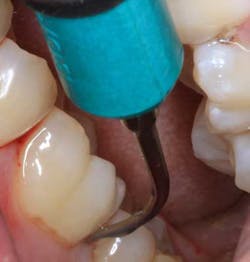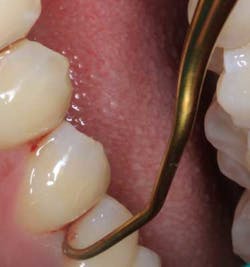Nonsurgical periodontal disease treatment: The periodontist's point of view
This article first appeared in the newsletter, DE's Breakthrough Clinical with Stacey Simmons, DDS. Subscribe here. For patients who present in the early stages of periodontal disease, nonsurgical periodontal therapy is often the first line of defense against further disease progression. These days, dental professionals have access to an arsenal of nonsurgical treatment options, including manual and ultrasonic scaling and root planing (SRP), antimicrobials, laser therapy, and a variety of other adjuncts. As a periodontist in practice for nearly 35 years, I know it can be challenging to weed through the clinical evidence to determine the best course of action for patients who may benefit from nonsurgical periodontal therapy, especially when many of these treatments have been developed and marketed with commercial interests in mind. While a large number of nonsurgical cases are handled in the general dentist’s office, periodontists are hard-wired by way of our training to pay close attention to the evidence behind these various treatment options. Therefore, I’d like to share the periodontist’s point of view with respect to nonsurgical periodontal treatment. In July, the American Dental Association’s Center for Evidence-based Dentistry released clinical practice guidelines on the nonsurgical treatment of chronic periodontal disease. The guidelines are based on a systemic review and meta-analysis of more than 70 studies that evaluated SRP with and without adjuncts for treatment of chronic periodontitis and used clinical attachment loss as the primary outcome measure. Sixteen experts, seven of whom were periodontists, were involved in the development of the guidelines.ADDITIONAL READING |A fundamental shift in our understanding of periodontal disease progressionThe ADA guidelines indicate that SRP remains the gold standard for nonsurgical therapy and should be considered as the initial treatment for chronic periodontitis. Most periodontists would agree with this sentiment. The guidelines also point out that SRP performed with manual instrumentation results in similar clinical outcomes as SRP using ultrasonic scaling units, but does not always lead to complete removal of subgingival calculus and biofilm. This is why some cases warrant the use of adjunctive therapies. However, the ADA guidelines found that that none of the adjunctive therapies, including systemic antimicrobials, systemic host modulators, locally delivered antimicrobials, and a variety of lasers (when used nonsurgically), resulted in a greater gain in clinical attachment loss over SRP alone. In fact, some of the adjunctive therapies, such as the diode, Nd:YAG, and Er:YAG lasers, yielded no additional benefit over SRP alone.
Clinicians may find the ADA guidelines helpful in selecting therapies for the initial phase of treating chronic periodontitis. It’s important to note that even evidence-based guidelines are not written in stone and are not intended to establish a standard of care. Instead they provide a reasonable prediction of what to expect from a certain treatment. Every patient is unique, and it is crucial that the practitioner base nonsurgical treatment decisions based on each individual case, using peer-reviewed evidence as a clinical roadmap. Treatment decisions should include careful risk assessment, creation of measurable clinical endpoints, clear communication with the patient about expected treatment outcomes and consequences of nontreatment, and consultation with a periodontist, especially when dealing with a complex case or a medically compromised patient.Having treated thousands of patients in my career, I can tell you that comprehensive management of chronic periodontitis often requires much more than just nonsurgical treatment. Depending on the case, the overall treatment plan should include individualized oral hygiene education; in-depth medical, social, and psychiatric assessment; occlusal evaluation; post-SRP reevaluation; potential surgical therapy; and ongoing maintenance. From the point of view of a seasoned periodontist, nonsurgical therapy is just the beginning.This article first appeared in the newsletter, DE's Breakthrough Clinical with Stacey Simmons, DDS. Subscribe here.
Joan Otomo-Corgel, DDS, MPH, is the president of the American Academy of Periodontology (AAP). In addition to maintaining a private periodontal practice in Manhattan Beach, California, Dr. Otomo-Corgel is an associate clinical professor in the Department of Periodontics at the University of California Los Angeles’ (UCLA) School of Dentistry, where she earned her dental degree in 1979. She completed a master’s degree in public health from the UCLA School of Public Health in 1980. An AAP member since 1977, Dr. Otomo-Corgel has served on the boards of trustees for the AAP and the AAP Foundation.



